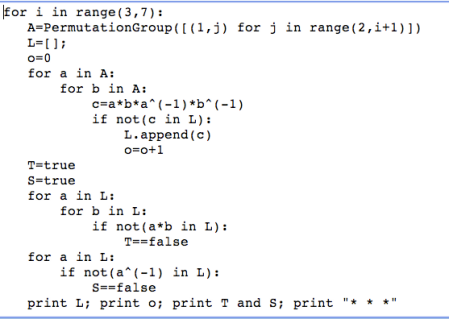Campanology, or bell ringing, is an English tradition, where a round of cathedral bells is rung by permuting their order. The book discusses some examples of the possible patterns used in practice (the Plain Lead on four bells, and the Plain Bob Minimus). Additional examples can be found in the Wikipedia link, and links are provided there to a few additional sites, such as bellringing.org.
I strongly recommend that you read Section 3.5 in the book dealing with this topic. It introduces through an example the useful notion of cosets, and also it is quite interesting. For example, it shows how several ideas from group theory were used in practice since the seventeenth century, predating the introduction of the concepts by Galois and his contemporaries, and in a completely different setting.
I did not know about this until I read the book, and of course now I see mentions of bell-ringing everywhere.
 The quote above, for example, is from the book Combinatorial Set Theory by Lorenz Halbeisen.
The quote above, for example, is from the book Combinatorial Set Theory by Lorenz Halbeisen.
A nice article on the topic (in French) can be found here; coincidentally, the article also talks at the end about juggling. The video of the talk on the mathematics of juggling by Allen Knutson that we saw an excerpt of today is here. A few technical and expository articles on this topic, by renown mathematician (and juggler) Ronald Graham, and his coauthors, can be found in Graham’s page. See for example here, here, here, and here.
43.614000
-116.202000



 Posted by andrescaicedo
Posted by andrescaicedo 
